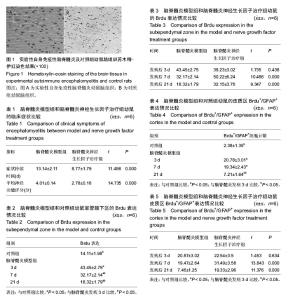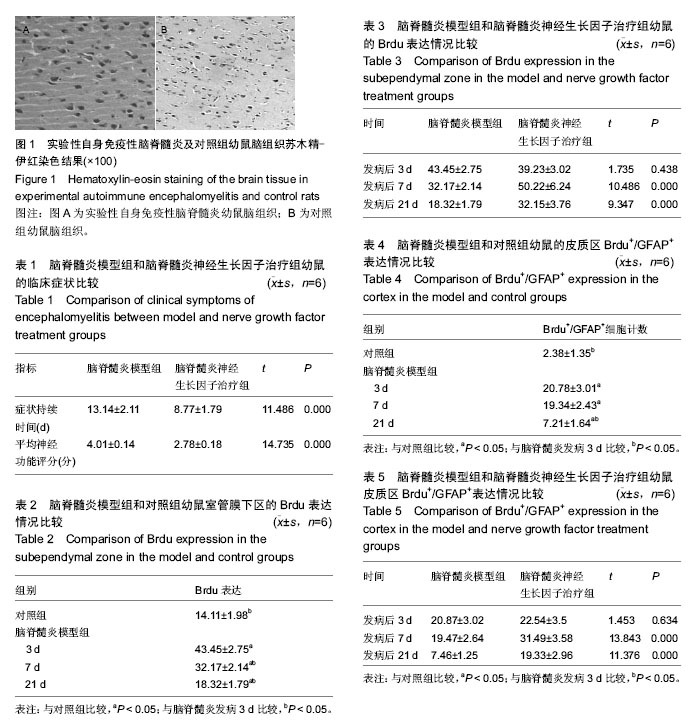| [1] 梁雪梅.多发性硬化症的临床分析[J].中国医药指南,2014, 12(10):258-259.
[2] 郭柳彩,陈莹.神经生长因子治疗周围性面瘫的系统评价[J].当代医学,2011,17(10):110-112.
[3] Lamers I, Maris A, Severijns D,et al.Upper Limb Rehabilitation in People With Multiple Sclerosis: A Systematic Review.Neurorehabil Neural Repair. 2016. pii:1545968315624785.
[4] Kern R, Haase R, Eisele JC,et al.Designing an Electronic Patient Management System for Multiple Sclerosis: Building a Next Generation Multiple Sclerosis Documentation System.Interact J Med Res. 2016;5(1):e2.
[5] Nielsen NM, Harpsme MC, Simonsen J,et al. Self-rated health in women prior to clinical onset of multiple sclerosis: A study within the Danish National Birth Cohort.Mult Scler. 2016. pii: 1352458515621623.
[6] 王丹丹,朴月善,卢德宏.多发性硬化症的神经病理学进展[J].北京医学,2013,35(5):374-376.
[7] 仁富亮,宋少伟,李恩东.多发性硬化症的治疗展望[J].中国卫生产业,2013,10(24):178-179.
[8] Hasselmann H, Bellmann-Strobl J, Ricken R, et al. Characterizing the phenotype of multiple sclerosis-associated depression in comparison with idiopathic major depression.Mult Scler. 2016. pii: 1352458515622826.
[9] 许国岩,赵国华,王积坤,等.干扰素-β治疗多发性硬化症疗效的Meta分析[J]. 中国医药科学,2015,5(12):27-30.
[10] 冯雪丹.自噬在实验性自身免疫性脑脊髓炎(EAE)小鼠神经元退行性变中的作用及机制探讨[D].河北医科大学, 2014.
[11] Chen SJ, Huang SH, Chen JW, et al.Melatonin enhances interleukin-10 expression and suppresses chemotaxis to inhibit inflammation in situ and reduce the severity of experimental autoimmune encephalomyelitis. Int Immunopharmacol. 2015;31: 169-177.
[12] 朱恩东. miR-20b对Th17细胞分化和实验性自身免疫性脑脊髓炎发病的调控机制研究[D].南开大学,2014.
[13] Trubiani O, Giacoppo S, Ballerini P,et al.Alternative source of stem cells derived from human periodontal ligament: a new treatment for experimental autoimmune encephalomyelitis.Stem Cell Res Ther. 2016;7(1):1.
[14] Zhang P, Guo M, Xing Y,et al.Immunomodulatory effect of Huangqi glycoprotein on mice with experimental autoimmune encephalomyelitis.Xi Bao Yu Fen Zi Mian Yi Xue Za Zhi. 2016;32(1):54-58.
[15] 钟妍. LFA-1调控T细胞活化及分化在实验性自身免疫性脑脊髓炎中的作用[D].吉林大学,2014.
[16] Moreno MA, Burns T, Yao P,et al.Therapeutic depletion of monocyte-derived cells protects from long-term axonal loss in experimental autoimmune encephalomyelitis. J Neuroimmunol. 2016;290: 36-46.
[17] Losina E, Michl G, Collins JE,et al.Model-based evaluation of cost-effectiveness of Nerve Growth Factor Inhibitors in Knee Osteoarthritis: Impact of drug cost, toxicity, and means of administration. Osteoarthritis Cartilage. 2015. pii: S1063-4584(15) 01434-X.
[18] Xu XJ, Liu L, Yao SK.Nerve growth factor and diarrhea-predominant irritable bowel syndrome (IBS-D): a potential therapeutic target? J Zhejiang Univ Sci B. 2016;17(1):1-9.
[19] 徐莉,饶春明.神经生长因子的研究进展[J].中国生物制品学杂志,2014,1:131-134.
[20] 刘广志,苗丹,何洋,等.多发性硬化症患者外周血LIGHT 的表达研究[J].中华神经医学杂志,2012,11(7):688-690.
[21] 徐思敏,周亮,沈颖,等.GSK3 调控神经干细胞和少突胶质细胞前体细胞发育的研究进展[J].生理科学进展,2012, 43(3):238-240.
[22] 霍炎,栗苹.针对多发性硬化症病人的综合步态分析[J].科技导报,2012,30(5):18-22.
[23] 李朝晖,刘宁,李兰,等.甲基强的松龙治疗急性期多发性硬化症56例临床疗效观察[J].四川医学,2012,33(3):485-487.
[24] Pan Y.Chronic brain,spinal cord venous insufficiency resulting in multiple sclerosis research progress.Theor Prac Surg. 2012;17(1):84-86.
[25] 吴祥,杨军.甲泼尼龙联合干扰素治疗复发缓解型多发性硬化症疗效观察[J].中国基层医药,2012,19(3):367-369.
[26] Huang X,Feng JK. Improved fuzzy C-means algorithm in multiple sclerosis MR brain images and its application. Chin J Clin Rehabil Tissue Engin Res. 2011;15(13): 2408-2411.
[27] 李彬,刘同.基于D-S 证据理论的多发性硬化症病灶分割算法[J].计算机应用研究,2011,28(1):378-380.
[28] 李振新.多发性硬化症早期诊治仍有机会回归正常[J].医药与保健,2012,20(3):20.
[29] The United States of America:a study of multiple sclerosis drug not delaying disability disabled. China. 2012;32(8):20-20.
[30] Zhang HM,Liang ZH,Lee LD. Spinal cord type and traditional type multiple sclerosis patients with hormone therapy.Chin Med J. 2011;8(19):167-168.
[31] 柏雪,胡风云.视神经脊髓炎特异性自身抗体阳性的多发性硬化症患者临床表现和磁共振成像相关性研究[J].中国药物与临床,2011,11(3):322-323.
[32] 范广明,张文彬,张赛,等.神经生长因子联合神经干细胞移植治疗大鼠脊髓损伤[J].中国组织工程研究与临床康复, 2010,14(14):2572-2578.
[33] Manoochehr M, Abolfazl N, Azadeh M,et al.Nerve growth factor receptors in dementia.Turk J Med Sci. 2015;45(5):1122-1126.
[34] Schecterson LC,Bothwell M. Neurotrophin receptors: Old friends with new partners. Dev Neurobiol. 2010; 70(5):332-338.
[35] Kang JY, Yoo DY, Lee KY,et al. SP, CGRP changes in pyridoxine induced neuropathic dogs with nerve growth factor gene therapy. BMC Neurosci. 2016; 17(1):1.
[36] 张莹,张朝东,赵久晗,等.神经生长因子纳米粒透过AD 大鼠血脑屏障的实验研究[J].实用医学杂志,2012,28(2): 190-192.
[37] 吴国彪,陈永群,王康.甘露醇开放血脑屏障后应用神经生长因子对重型颅脑损伤治疗的研究[J].中国医学创新, 2012,9(15):102-103.
[38] Mandel RJ. CERE-110,an adeno-associated virus-based gene delivery vector expressing human nerve growth factor for the treatment of Alzheimer’s disease. Curr Opin Mol Ther. 2010;12(2):240-247.
[39] Liu YR,Liu Q. Meta-analysis of mNGF therapy for peripheral nerve injury:a systematic review. Chin J Traumatol. 2012;15(2):86-91. |

